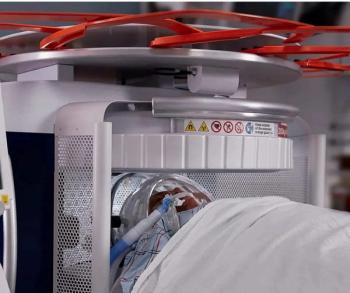
Higher CAD-Measured Values, Poorer Outcomes in Some Breast Cancers
CAD-measured peak enhancement at preoperative MRI of women with primary operable breast cancer and outcomes.
Women with primary operable breast cancer who have higher values of computer-aided diagnosis (CAD) peak enhancement and washout component at preoperative MR imaging have a poor disease-free survival rate, according to a study published in
Researchers from South Korea performed a retrospective study to investigate the relationship between the kinetic features of breast cancer assessed with CAD at preoperative MR imaging and disease-free survival in patients with primary operable invasive breast cancer.
A total of 329 women with a mean age of 52.9 were included in the study. Median follow-up was 50 months. All women had newly diagnosed invasive breast cancer and had undergone preoperative MR imaging and surgery between January 2012 and February 2013. All MR images were retrospectively reviewed by using a commercially available CAD system. The kinetic parameters use for each lesion included:
• Peak enhancement, which is the highest pixel signal intensity in the first series obtained after administration of contrast material
• Angio-volume, the total volume of the enhancing lesion
• Delayed enhancement profiles, the proportions of washout, plateau, and persistently enhancing component within a tumor
The results showed that there were 36 recurrences at 50 months. The CAD-measured peak enhancement at preoperative MR imaging enabled differentiation between patients with and patients without recurrence (area under the receiver operating characteristic curve = 0.728). The Multivariate Cox analysis showed that a higher peak enhancement, a higher washout component, and lymphovascular invasion at histopathologic examination were associated with poorer disease-free survival.
The researchers concluded that higher values of CAD-measured peak enhancement and washout component at preoperative MR imaging were significantly associated with poorer disease-free survival of patients with primary operable breast cancer.
Newsletter
Stay at the forefront of radiology with the Diagnostic Imaging newsletter, delivering the latest news, clinical insights, and imaging advancements for today’s radiologists.

























